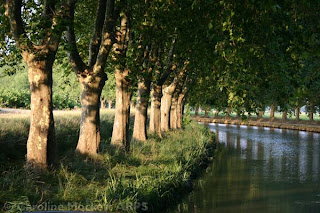What is meant when referring to the "aperture" (or f-numbers) of a lens?
 Photographic lenses contain an iris, made up of solid vanes, built in a similar pattern to those on the left. The vanes can move in and out, thus making the central hole larger or smaller - and so letting more or less light through the lens. This is what's called the aperture, and is a guide to the speed of the lens.
Photographic lenses contain an iris, made up of solid vanes, built in a similar pattern to those on the left. The vanes can move in and out, thus making the central hole larger or smaller - and so letting more or less light through the lens. This is what's called the aperture, and is a guide to the speed of the lens.The f-stop, (f-number) or aperture is not an absolute number, it's also related to the physical diameter of the lens. So we can compare the relative apertures of a small compact camera's lens with that of a large telephoto, and still get a sense of which is better at gathering light.
Theory
The main series of f-numbers goes as follows (a sequence of root 2): f/1.8, f/2, f/2.8, f/4, f/5.6, f/8, f/11, f/16, f/22, f/32
This seems rather complicated and counter-intuitive at first, but the basic thing to remember is this:
lower f/number = larger hole = faster lens = better in low lightMost SLR lenses will have their maximum aperture written on the side. This is the largest size of the hole, when the iris is fully retracted.
higher f/number = smaller hole = slower lens = better in bright light
More expensive lenses will have a lower f-number, such as f/2.8, which means they have a larger maximum aperture - and will be better for taking photos in low-light conditions.
Things get complicated with zoom lenses - which often have a different maximum aperture at each end of the zoom range, eg. 28-105mm, f/4-5.6. This is saying:
at 28mm end, max aperture is f/4How this affects your pictures - Depth of Field
at 105mm end, max aperture is f/5.6 (ie smaller than f/4.5)
The other thing which needs considering at this point, is something called Depth of Field. This means what proportion of the image is sharp, in front of and behind the actual point where you focus. I will cover depth of field more fully in another post, but for the purposes of apertures, in general, we need to remember the following:
lower f/number = smaller depth of field = less of image in focusExamples
higher f/number = larger depth of field = more of image in focus
Let's compare the effects of using two extremes of f/number:
f/2.8
- Large aperture
- Good in overcast or low-light conditions
- Will tend to require using faster shutter speeds
- Smaller depth of field - less of the overall image in focus
- Better for portaits or closeups, because backgrounds become blurred and do not intrude
 [large aperture - in low-light conditions, giving small depth of field (only the first couple of blooms are in focus). The background is unobtrusive]
[large aperture - in low-light conditions, giving small depth of field (only the first couple of blooms are in focus). The background is unobtrusive]f/16
- Small aperture
- Good in bright, sunny conditions
- Will tend to require using slower shutter speeds
- Larger depth of field - more of the overall image in focus
- Great for landscapes, where you want everything, from a few meters to infinity, to be sharp
 [small aperture - in sunny conditions, giving a large depth of field (almost everything is sharp), great for landscape work]
[small aperture - in sunny conditions, giving a large depth of field (almost everything is sharp), great for landscape work]As good practice, why not turn your camera to AP (aperture-priority) mode and take a few pictures of the same subject, but using different aperture settings. This will show you exactly what the effects of controlling the aperture can do for your photographs.


4 comments:
Hi,
This is the tuturial that I was looking for.
Thanks a lot, I'll try this out.
You have become part of my bookmark.
GREAT POST! Thank you
Thanks for the info, explained simply I now understand the concept.
Good Post. Famous astrologer is the best way to solve future Problems
Top Vedic Indian Astrologer in Sydney | Famous Indian Astrologer in Sydney | Intercast Love Marriage Specialist in Sydney |Astrological remedies for health problems in sydney |Business problem specialist astrologer in Sydney
Post a Comment